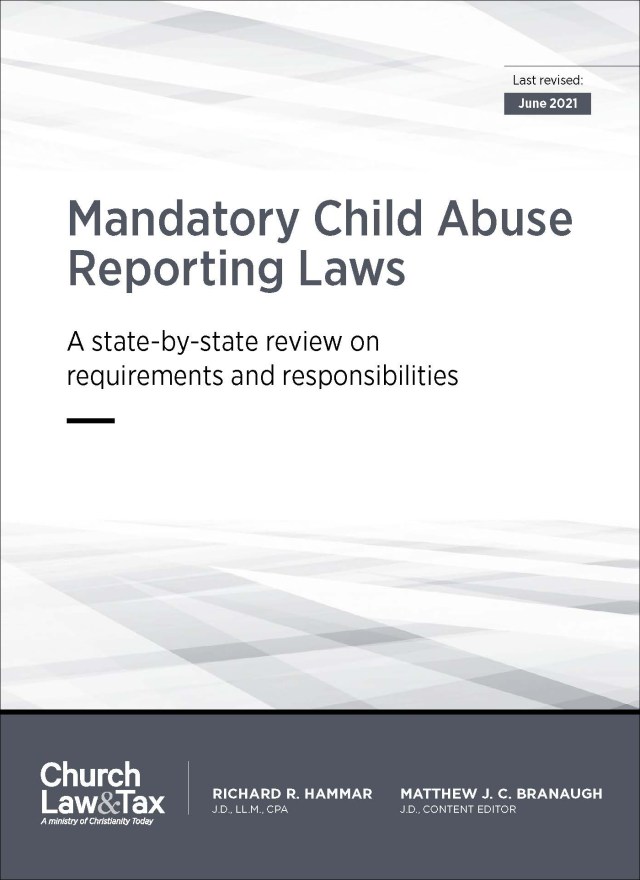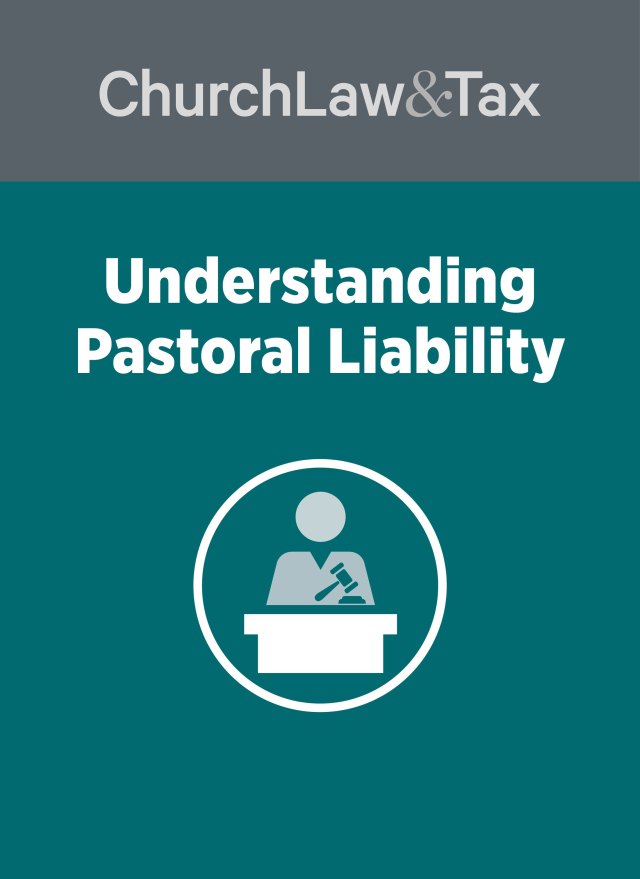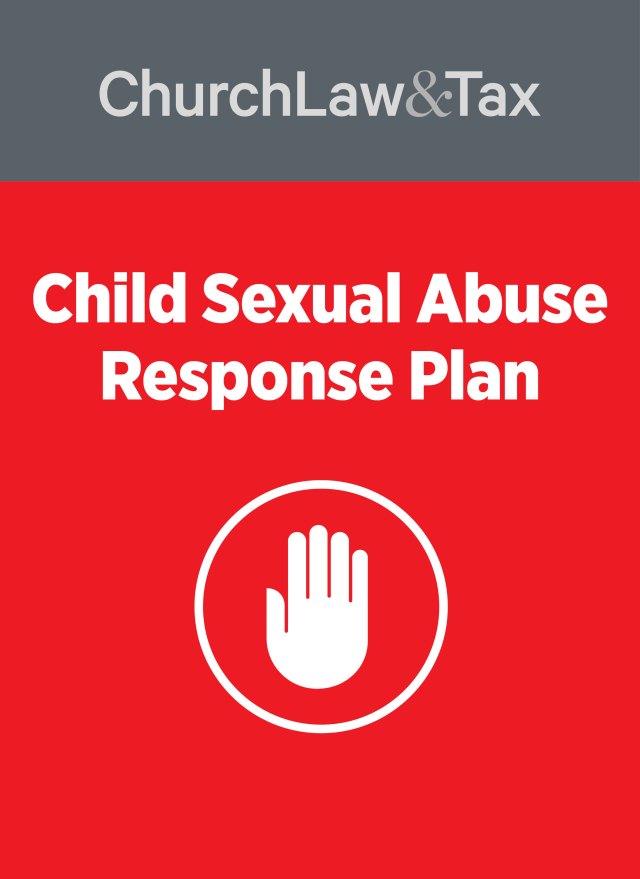Doe v. First United Methodist Church, 629 N.E.2d 402 (Ohio 1994)
Key point. Minors who are sexually molested by church workers may not sue their church after the statute of limitations has expired. Generally, the statute of limitations begins to run on a minor's 18th birthday. In some states the statute of limitations does not begin to run until an adult survivor of child sexual molestation "discovers" that he or she has experienced physical or emotional suffering as a result of the molestation. Other states do not recognize this so—called "discovery rule."
The Ohio Supreme Court dismissed a lawsuit brought by a 25—year—old man who had been repeatedly molested as a minor by a church choir director.
The victim had been molested by his church choir director on nearly 300 occasions over a period of 3 years (from 1981 through 1984) when he was between 15 and 18 years of age. He turned 18 in July of 1984. In July of 1991, shortly after his 25th birthday, the victim filed a lawsuit against the choir director and his church. He alleged that the director was guilty of assault and battery, and that the church had been negligent in the selection and supervision of the choir director. Ohio has a 1—year statute of limitations for assault and battery, meaning that a lawsuit alleging assault and battery must be brought within one year following the alleged wrongdoing. Ohio has a 2—year statute of limitations for bodily injury resulting from negligence.
Obviously, these statutes had expired long before the victim brought his lawsuit in 1991. However, the victim insisted that the statutes had not expired since he did not "discover" the nature and extent of his injuries until he sought psychological help in September of 1989. A trial court dismissed the lawsuit, concluding that the statutes of limitations began running on the victim's 18th birthday (in 1984), and not when he sought counseling in 1989. A state appeals court agreed, and the victim appealed to the state supreme court.
The Ohio Supreme Court affirmed the dismissal of the victim's lawsuit. With regard to the claim of assault and battery against the choir director, the court noted that the 1—year statute of limitations for assault and battery expired prior to the time the victim brought his lawsuit even if the statute did not begin to run until he sought counseling in 1989. Further, the court refused to allow the victim to utilize other theories of law to transform an assault and battery into another wrong with a longer limitations period. It observed: "[T]hrough clever pleading or by utilizing another theory of law, the assault and battery cannot be [transformed] into another type of action subject to a longer statute of limitations as it would circumvent the statute of limitations for assault and battery to allow that to be done."
With regard to the victim's claim that the church was responsible for his injuries on the basis of negligence, the court pointed out that the 2—year statute of limitations for negligence applied. The court concluded that the 2—year period of time for bringing a negligence lawsuit against the church began on the victim's 18th birthday and not when he claimed to have "discovered" that his emotional injuries were caused by the abuse. The court observed:
Given the facts of this case, even if this court were to adopt, now or in the future, a rule of discovery for cases of sexual abuse, the rule would not apply to toll the periods of limitations beyond [the victim's] eighteenth birthday. Here, the facts clearly establish that at the time [he] reached the age of majority, [he] knew that he had been sexually abused by [the choir director]. [The choir director] allegedly initiated homosexual conduct with [the victim] on two hundred to three hundred separate occasions without [his] consent. During the period of sexual abuse, [the victim] was fourteen to seventeen years of age. Apparently, the last act of sexual battery occurred just months prior to [the victim's] eighteenth birthday. After graduating from high school, [he] became preoccupied with his sexual identity and suffered from depression, guilt, anger and anxiety. [He] eventually sought psychological help in September 1989, and told his psychologist of the prior sexual encounters with [the choir director].
In July 1984, upon reaching the age of majority, [the victim] knew that he had been sexually abused, and he knew the identity of the perpetrator. Although [he] may not have discovered the full extent of his psychological injuries until September 1989, the fact that [he] was aware upon reaching the age of majority that he had been sexually abused by [the choir director] was sufficient to trigger the commencement of the statute of limitations for assault and battery. Nothing in law, or in fact, prevented [the victim] from asserting his claims against [the choir director] during the applicable statutory limitations period. We find that the one—year statute of limitations for [the victim's] claims against [the choir director] commenced on July 7, 1984, and, thus, [the victim's] action … (filed on July 12, 1991) was time—barred. We hold that a minor who is the victim of sexual abuse has one year from the date he or she reaches the age of majority to assert any claims against the perpetrator arising from the sexual abuse where the victim knows the identity of the perpetrator and is fully aware of the fact that a battery has occurred. (emphasis added)
The court concluded that the victim's claims against the church were also barred by the statute of limitations. It pointed out that the victim "has never claimed or argued that his knowledge of the sexual abuse was insufficient to apprise him of the possibility that the church … had been negligent in failing to protect him from [the choir director]. Under these circumstances, we are left to assume that the events that triggered the one—year statute of limitations for assault and battery were no different from the events that triggered the two—year statute of limitations that applies to [the victim's] negligence causes of action against the church …. Therefore, the two—year period of limitations commenced in July 1984, and [the victim's] negligence claims against the church … are barred …." The court emphasized that this case did
not involve any impediment which might have precluded [the victim] from asserting his claims in a timely fashion. Here, [he] knew of [the choir director's] tortious conduct at the time it occurred and this knowledge continued undiminished throughout the applicable statutory limitations period. This is not a case involving the sexual abuse of a child of tender years. This is not a case involving incest. This is not a case involving repressed memory or psychological disability. At some future date, on facts different from those presented in the case at bar, this court may very well consider whether to apply a rule of discovery to toll an applicable statute of limitations in a case involving childhood sexual abuse. However, the facts of this case do not require or permit us to reach that question.
This is an important development. Many adult survivors of child sexual molestation have brought lawsuits many years (and in some cases decades) after their 18th birthday, claiming that they had not "discovered" the nature and extent of their psychological harm until they sought professional counseling. A number of states (perhaps as many as 15) have adopted the so—called "discovery rule," under which the statute of limitations does not begin to run until an adult survivor of child sexual molestation discovers the nature and extent of his or her injuries, whenever that may occur. Of course, such a rule presents extraordinary difficulties for a church in attempting to defend itself. In some cases, church leaders cannot even remember the alleged molester, much less the precautions that were followed in selecting or supervising this person. Because of these difficulties, a majority of states have rejected the discovery rule.
This case illustrates the majority rule. But this case is important for another reason. The court rejected the victim's assertion that he was not aware of his injuries until he sought counseling when he was 25 years old. What was the court saying? Simply this—adult survivors of child sexual molestation should not be permitted to sue churches years or decades after an incident of molestation simply by asserting that they were not aware of their injuries until they sought counseling. Of course, in some cases such a claim will be legitimate, particularly in cases involving molestation of young children. But when a victim is a teenager, such a claim will be more difficult to prove.
Because of the almost impossible burden that is imposed on churches in such cases to disprove allegations of negligence for an alleged incident that occurred many years before, courts should view such claims of "delayed discovery" with skepticism. This reasoning will be useful to churches in those states that recognize the discovery rule.
Key point. The most significant aspect of this case was the Ohio Supreme Court's conclusion that the statute of limitations for adult survivors of child sexual abuse begins to run on the victim's 18th birthday if "the victim knows the identity of the perpetrator and is fully aware of the fact that a battery has occurred."




